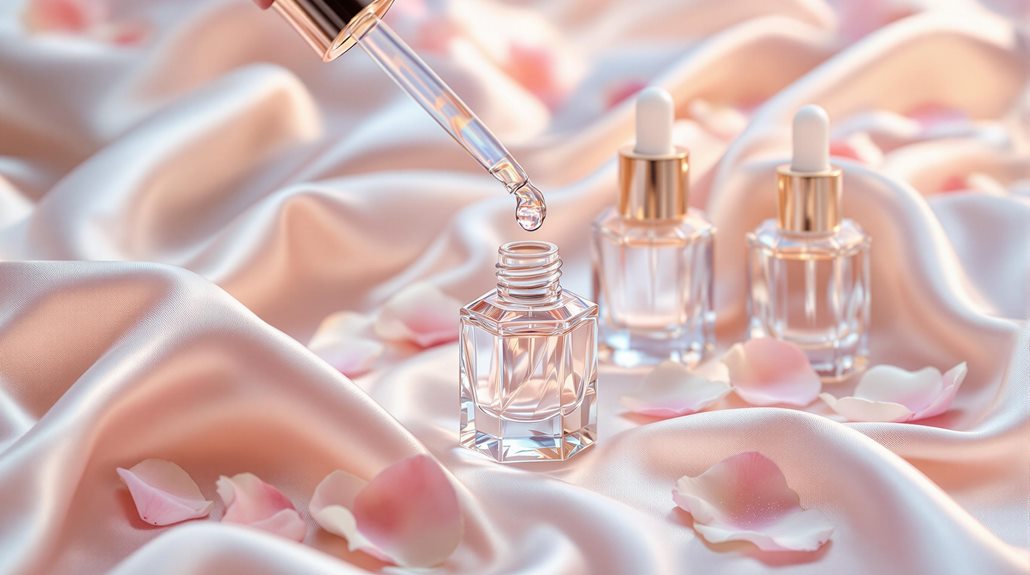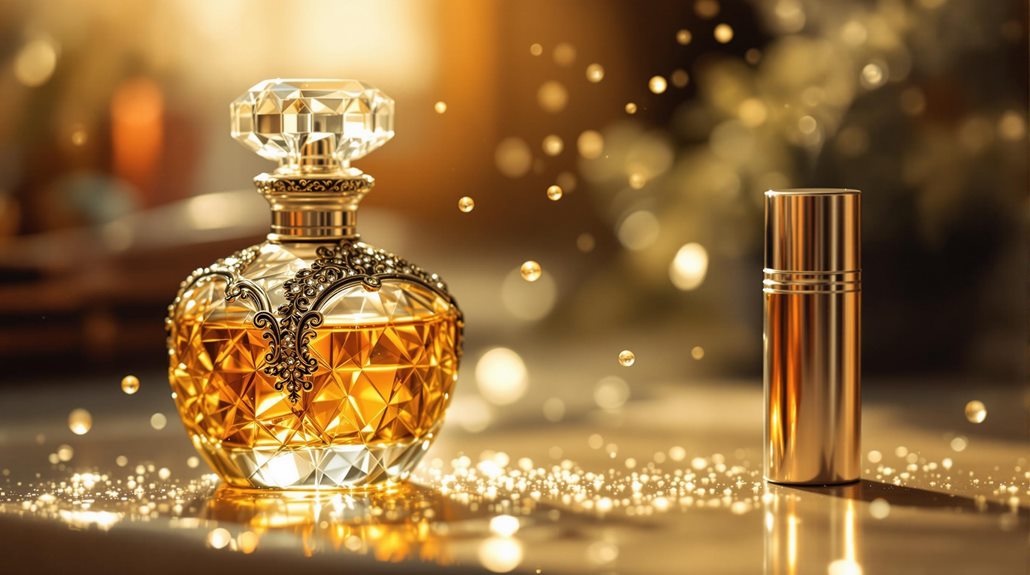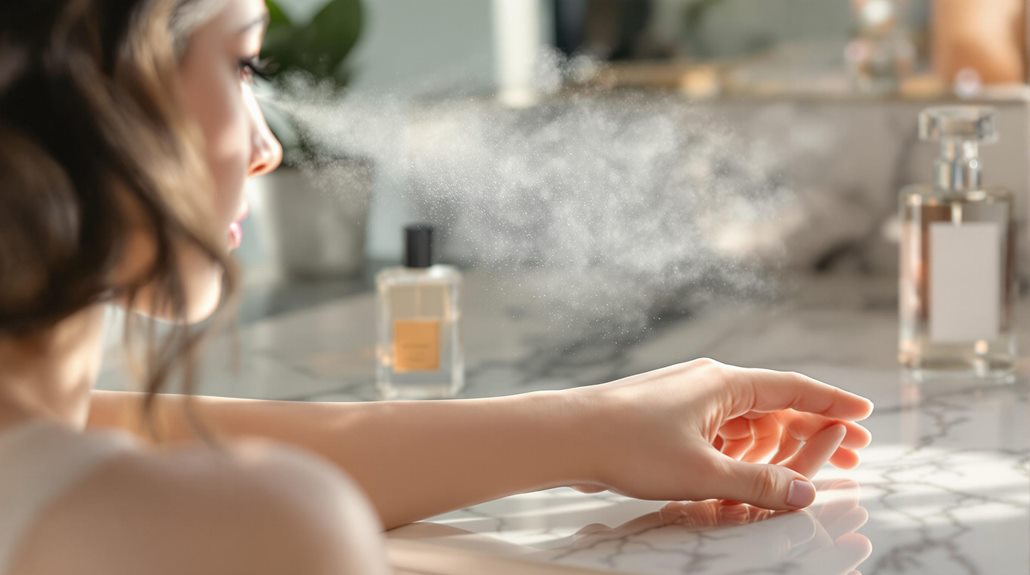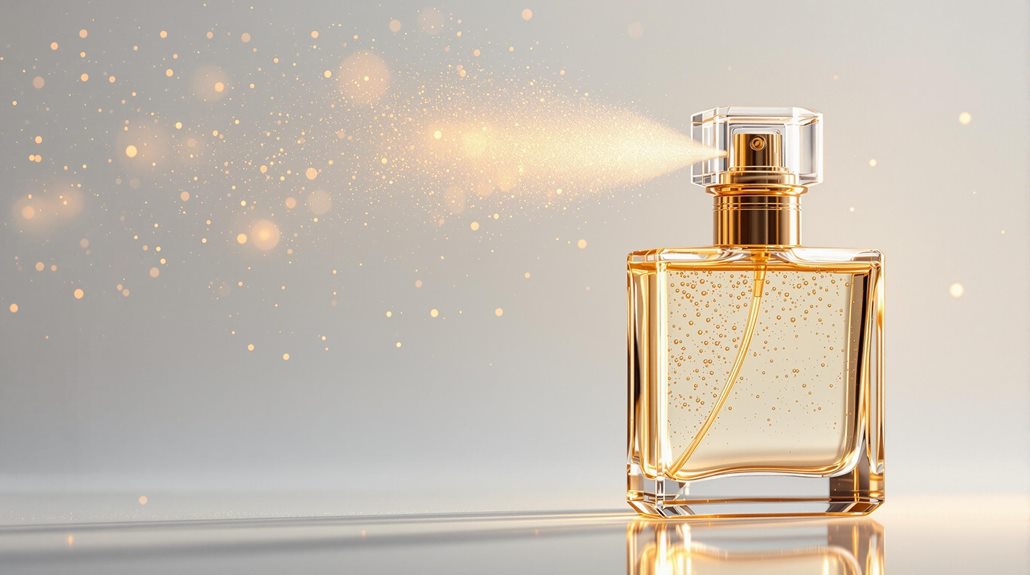Creating Scents With Essential Oils: How to Make Perfume at Home
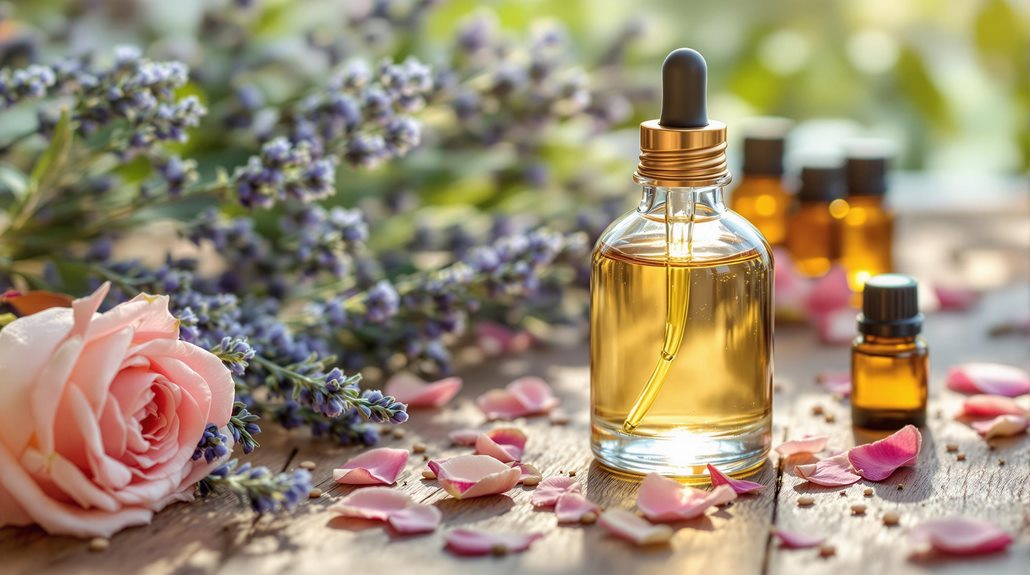
You can create your own natural perfume at home using essential oils and a few basic supplies. Start by selecting three oils that represent top, middle, and base notes - like citrus for top, floral for middle, and woody for base notes. Mix these in a 2:1:1 ratio using glass droppers for precise measurements, then combine with a carrier oil like jojoba in a dark glass bottle. Let your blend mature for at least a week before use, and apply to pulse points for the best effect. Following proper safety guidelines and storage methods will help you reveal the full potential of your custom scent creation.
Understanding Perfume Note Structures
Every perfume tells a story through its carefully structured layers of scent. When you're creating your own fragrance, you'll need to understand how different notes work together to create a harmonious scent profile that unfolds over time.
Think of your perfume as a three-act play. The top note opens the show with bright, volatile scents that immediately catch your attention but quickly fade. These might include citrus or light herbal elements that create that pivotal first impression. As these dissipate, the middle notes, or heart notes, take center stage. They're the core of your fragrance, often featuring floral or spicy elements that give your perfume its distinctive character.
The base notes are your fragrance's foundation, providing depth and longevity to your creation. These heavy, warm scents will linger the longest on your skin, so you'll want to choose them carefully. Understanding this note structure is essential because it helps you create a balanced perfume that'll evolve beautifully throughout the day. When you layer your scents thoughtfully, each note complements the others, resulting in a well-rounded fragrance that shifts seamlessly from one phase to the next.
Essential Safety Precautions
While understanding perfume notes helps you create beautiful fragrances, working safely with essential oils must come first. When mixing your perfume, you'll need to be especially careful with "hot" oils, particularly those in the category: top notes like citrus fragrances and spice oils, as they can cause skin irritation. Always dilute these oils properly with a carrier oil like olive or fractionated coconut oil to safeguard sensitive skin.
When creating your blends, measure drops with a pipette to guarantee accurate ratios that work well without causing adverse reactions. Use glass spray bottles rather than plastic ones, as essential oils can degrade plastic containers. If you're planning to use Rubbing Alcohol as a base, make sure it's properly diluted to prevent skin sensitivity.
Keep in mind that your homemade perfumes can affect others, especially pets. Don't use essential oils in room sprays if you have cats, birds, or small mammals. When using citrus-based oils, remember they can cause photosensitivity, so avoid direct sun exposure after application. If you experience any skin irritation, immediately apply a carrier oil to soothe the affected area.
Gathering Your Blending Materials
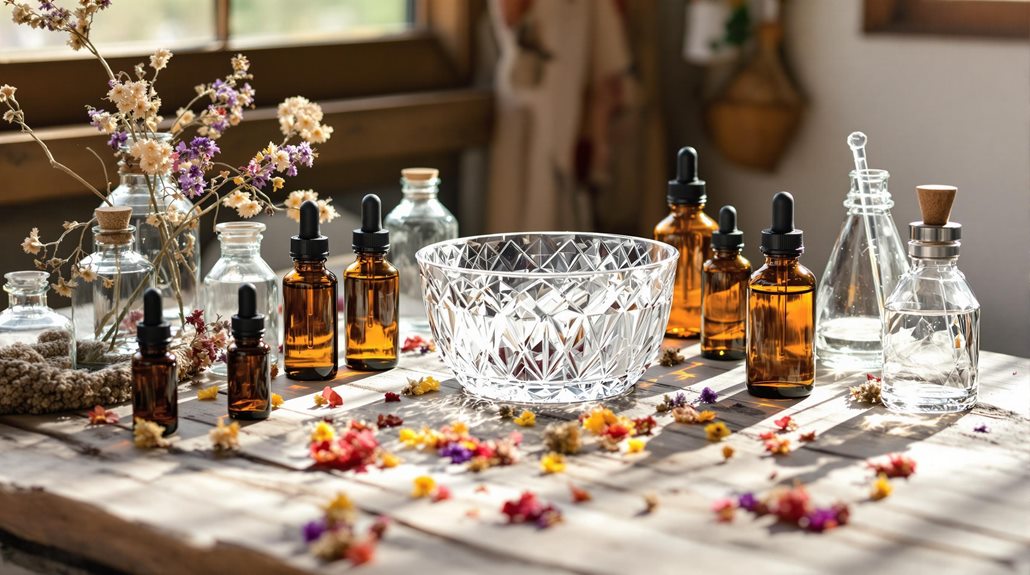
Gathering the right materials is essential for creating your signature scent. To make perfume at home, you'll need a 5 mL glass bottle with a rollerball applicator, three essential oils representing different notes, and a carrier oil like jojoba oil or almond oil. You'll also need four pipettes or glass droppers for precise measurements.
For your essential oil blend, you'll work with a 20% concentration ratio, which means combining 20 drops of essential oils with 80 drops of carrier oil. If you have sensitive skin, reduce the concentration to 15%. Here's what you'll need to gather before starting:
- A 5 mL rollerball glass bottle for storing your finished perfume
- Three essential oils: one each for head note (5 drops), heart note (5 drops), and base note (10 drops)
- Four pipettes or glass droppers for accurate measuring
- An unscented carrier oil (jojoba or almond oil)
Remember to select high-quality materials, as they'll directly impact your perfume's final result. Store all your materials in a clean, organized workspace, and guarantee your glass bottles and pipettes are thoroughly sanitized before use.
Mixing Your Custom Fragrance
Creating your custom fragrance starts with the essential oil blend, following the time-tested 2:1:1 ratio. You'll use two parts base note essential oils combined with one part heart note and one part top note to achieve a perfectly balanced scent. When making perfume, carefully count your drops to maintain these proportions.
After blending your essential oils, let them rest for a minimum of one week before introducing your chosen carrier oil. Both jojoba and sweet almond oil work excellently as carriers, helping to dilute and preserve your fragrance. Transfer your creation to a 5mL roll-on or dropper bottle, leaving some space at the top for the oils to breathe.
Don't forget to mark your bottle with the "Born On" date, as this helps track your perfume's maturation and shelf life. Allow your blend to mature for a full month, during which time the scent notes will meld and develop into their final form. While waiting, you can experiment with different essential oil combinations, mixing woodsy, floral, fruity, and earthy scents until you uncover your perfect signature fragrance.
Storing and Using Natural Perfumes
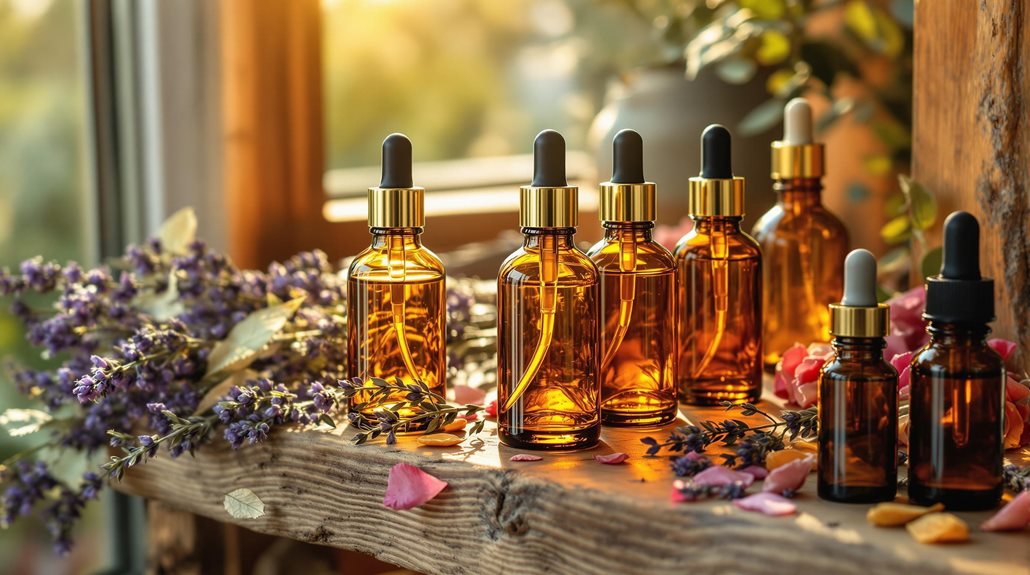
To preserve your handcrafted perfume's potency, proper storage becomes essential for maintaining its delicate aromatic properties. Keep your DIY perfume in a dark glass bottle away from direct sunlight and heat sources, as these elements can quickly degrade your essential oils and alter the carefully crafted notes of your signature scent.
Since natural perfumes containing essential oils have a shorter lifespan than synthetic fragrances, you'll want to be mindful of their 6-12 month shelf life. When applying your perfume, remember that a little goes a long way, especially when you've created a concentrated blend with drops of essential oils and drops of carrier like fractionated coconut oil.
For optimal wear, apply your perfume oils to these key pulse points:
- Inside of wrists, where the skin is naturally warm
- Base of throat and neck area for lasting head note projection
- Behind your ears to enhance the fragrance's diffusion
- Inner elbows for subtle scent release throughout the day
Store your remaining perfume in a cool, dark cabinet or drawer, and always safeguard the cap is tightly sealed to prevent oxidation from excess air exposure.
Conclusion
You're now equipped to create your own signature scents using natural essential oils. Whether you've crafted a floral blend or woodsy fragrance, remember to store your perfume in dark glass bottles away from heat and light. Start with small batches, keep detailed notes of your recipes, and don't be afraid to experiment. With practice, you'll develop a nose for combining oils into unique personal fragrances.

